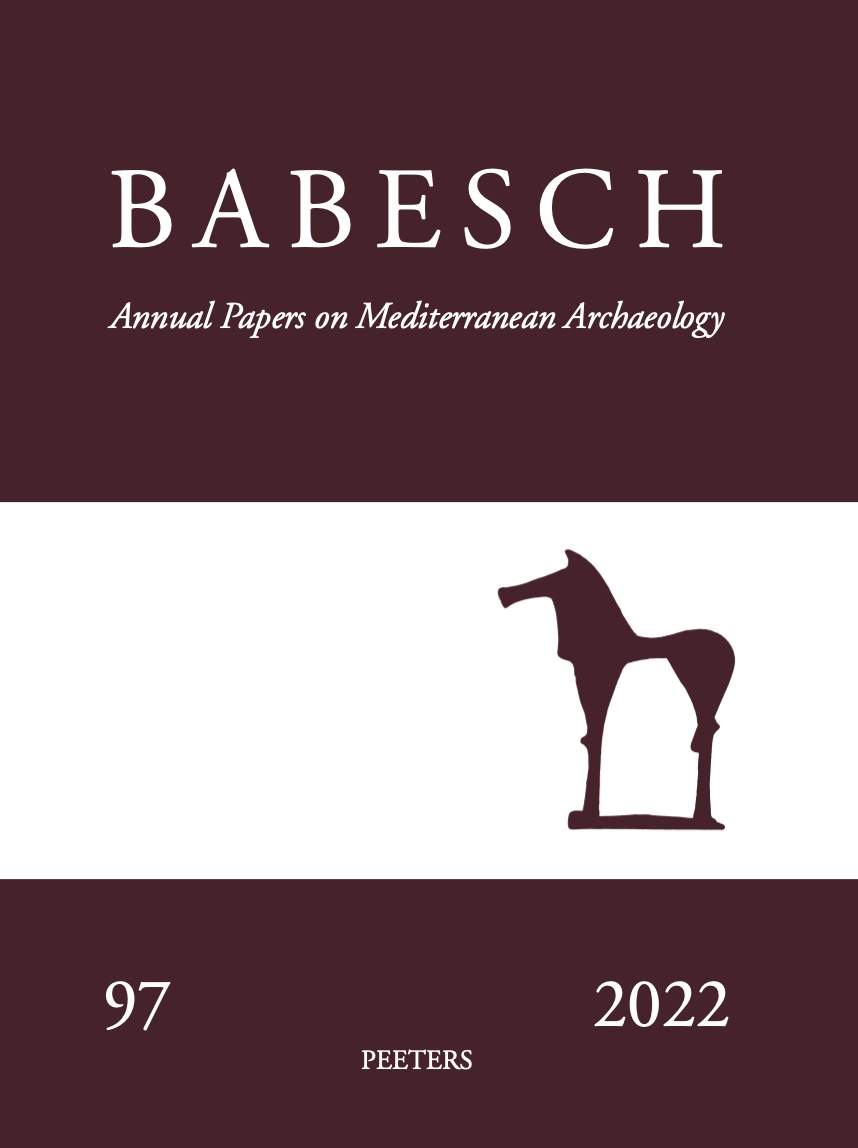 previous article in this issue previous article in this issue | next article in this issue  |

Preview first page |
Document Details : Title: Greek Colonists and Indigenous Populations at L'Amastuola, Southern Italy Author(s): BURGERS, Gert-Jan , CRIELAARD, Jean Paul Journal: BABESCH Volume: 82 Issue: 1 Date: 2007 Pages: 77-114 DOI: 10.2143/BAB.82.1.2020763 Abstract : The Archaic settlement at L’Amastuola (15 km north-west of Taranto) is considered as a key site for the understanding of processes of colonization and modes of interactions between indigenes and Greeks. In this article, we present some preliminary results of fieldwork carried out between 2003 and 2005 in and around L’Amastuola. The outcomes of our excavations and surface surveys shed new light on the nature and occupation history of the site. During the late 8th century it was settled by indigenous people, who possibly around 670 BC fortified the hill top with a double circumvallation. The site is characterized by a heterogeneous material culture, with ‘typical indigenous’ items, such as the defensive system, hut plans and ceramic repertoires, fused with ‘typical Greek’ items, such as house plans, pottery and burial customs. This suggests that L’Amastuola housed an independent community, with a mixed indigenous-Greek background. A highly significant piece of evidence for this is a stele of indigenous type found among burials that are in line with Greek traditions. This situation lasted until the first half of the 5th century, when we witness substantial alterations in the organization of settlement and cemeteries, and in land use. We argue that these changes mark the westward colonial expansion of Taras, and propose that the L’Amastuola area was incorporated in the Tarentine chora not around 675 BC - as some scholars suggest - but only in the course of the 5th century. |
|


